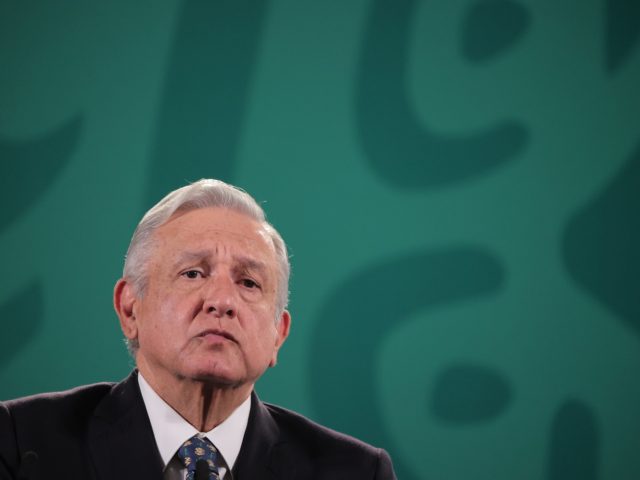Mexico’s President Andres Manuel Lopez Obrador traveled Monday to Torreón to ask for forgiveness for the May 1911 slaughter of over 300 Chinese by revolutionary troops and thousands of locals in the northern Mexican city, reportedly fired up by racist slurs.
The apology is part of a year-long series of ceremonies during which the president, known as AMLO, has sought to make amends for some of the darker chapters in Mexico’s history, namely the mistreatment of indigenous and minority people in past centuries.
AMLO declared the point of the apology was to ensure “that this never, ever happens again,” acknowledging that during the period, Chinese were mutilated or hung from telegraph poles, the Associated Press (AP) reported Monday.
“The discrimination was based on the vilest and offensive” stereotypes, the Mexican president also said.
“These stupid ideas were transferred to Mexico, where extermination was added to exclusion and mistreatment,” he added.
China’s Ambassador to Mexico Zhu Qingqiao accompanied AMLO during the apology ceremony.
It was a “great honor” to be part of the ceremony in Torreón aimed at “healing the wound left by history,” the Chinese envoy reportedly declared.
China and Mexico “have become strategic partners,” Zhu added. Communist China is Mexico’s second largest trading partner after the U.S. China is also the second-largest economy in the world after the U.S.
The relationship between Mexico and China has been bolstered by Beijing’s role in providing vaccines and other medical supplies to the Latin American country amid the coronavirus pandemic in China.
“Today, I wish to thank the president of China, Xi Jinping, and its ambassador in Mexico, Zhu Qingqiao, as well as the scientists of China, its diplomats, and its companies,” Lopez Obrador reportedly said during the apology ceremony.
Although López Obrador usually lavishes praise on the 1910-1917 revolutionary movement, he conceded that the movement also expressed anti-Chinese sentiments.
Until Monday, Mexico and residents of Torreón, in particular, had remained largely silent about the massacre. Nobody in the city was tried or convicted, let alone charged for the killings.
Mexico eventually agreed to pay 3.1 million pesos in gold in reparations to China, where the massacre caused indignation. However, Mexico never made the payment.
In the 1800s, many Chinese migrants emigrated to Mexico to work as laborers to expand the nation’s railroads. However, many established businesses, farms, and even a bank in Torreón before the slaughter.
AP noted:
The 1911 killings of 303 Chinese men, women, and children occurred during the chaotic period of the Mexican Revolution, when revolutionary troops overran Torreón, sealing the fate of long-time ruler Porfirio Díaz. The loss of the city led Díaz to resign and leave for exile.
Like most racial killings, it was fed by suspicion, hatred, fear, envy and lies. Torreón was a booming railway town, and control of it was key to rail lines north to the United States. Some Mexicans grumbled that Chinese were taking jobs or depressing wage rates; others were envious of the Chinese community’s economic success.
On Sunday, the Guardian noted many of the killers were motivated by racism.
The newspaper reported:
As the rebels entered the city [on May 13, 1911], they were joined by thousands of locals [including women], fired up by racist speeches. A herb-seller is said to have clutched a Mexican flag and screamed: “Let’s kill the Chinese!” A revolutionary commander, Benjamin Argumedo, is believed to have fired the first shot.
[…]
A total of 303 Chinese people [including women and children] were murdered in the massacre at Torreón, then a burgeoning railway town some 500 miles south of the US border. Afterwards, rebels and locals posed for photographs with the bodies of their victims before they were hauled away by the cartload. The savagery was an appalling expression of a wave of anti-Chinese racism which swept throughout North America in the 19th and early 20th centuries.
[…]
In his book The House of the Pain of Others: Chronicle of a Small Genocide, Julian Herbert disputes the local narrative that the pogrom was a spontaneous uprising by poor Mexicans, arguing instead that anti-Chinese racism was rife in Torreón – and across the country. Herbert’s conclusions proved so controversial that he was unable to hold an event promoting the book in Torreón.
The massacre killed half of the city’s Chinese population. Some residents helped hide some of the survivors.
“Victims of the massacre were buried in common graves, including one which is now covered by a roadway and small playground,” the Guardian revealed.
AP added:
Historian Monica Cinco Basurto said the massacre was far from the only anti-Chinese act in Mexico. Looting of Chinese-owned businesses and the expulsion or forced departure of Chinese — often without recognizing their Mexican citizenship or that of their children or wives — extended throughout northern Mexico into the 1930s.
Most of the survivors let Torreón, but some returned later. The local Chinese community in the city now numbers about 1,000.

COMMENTS
Please let us know if you're having issues with commenting.